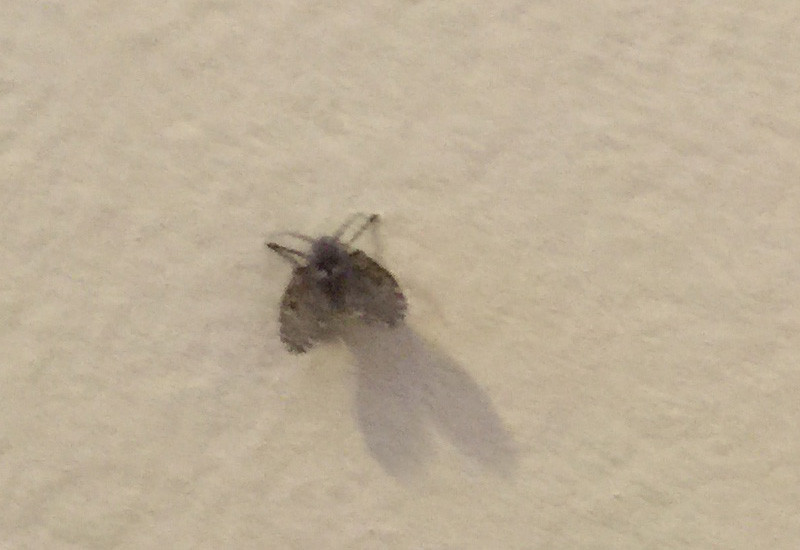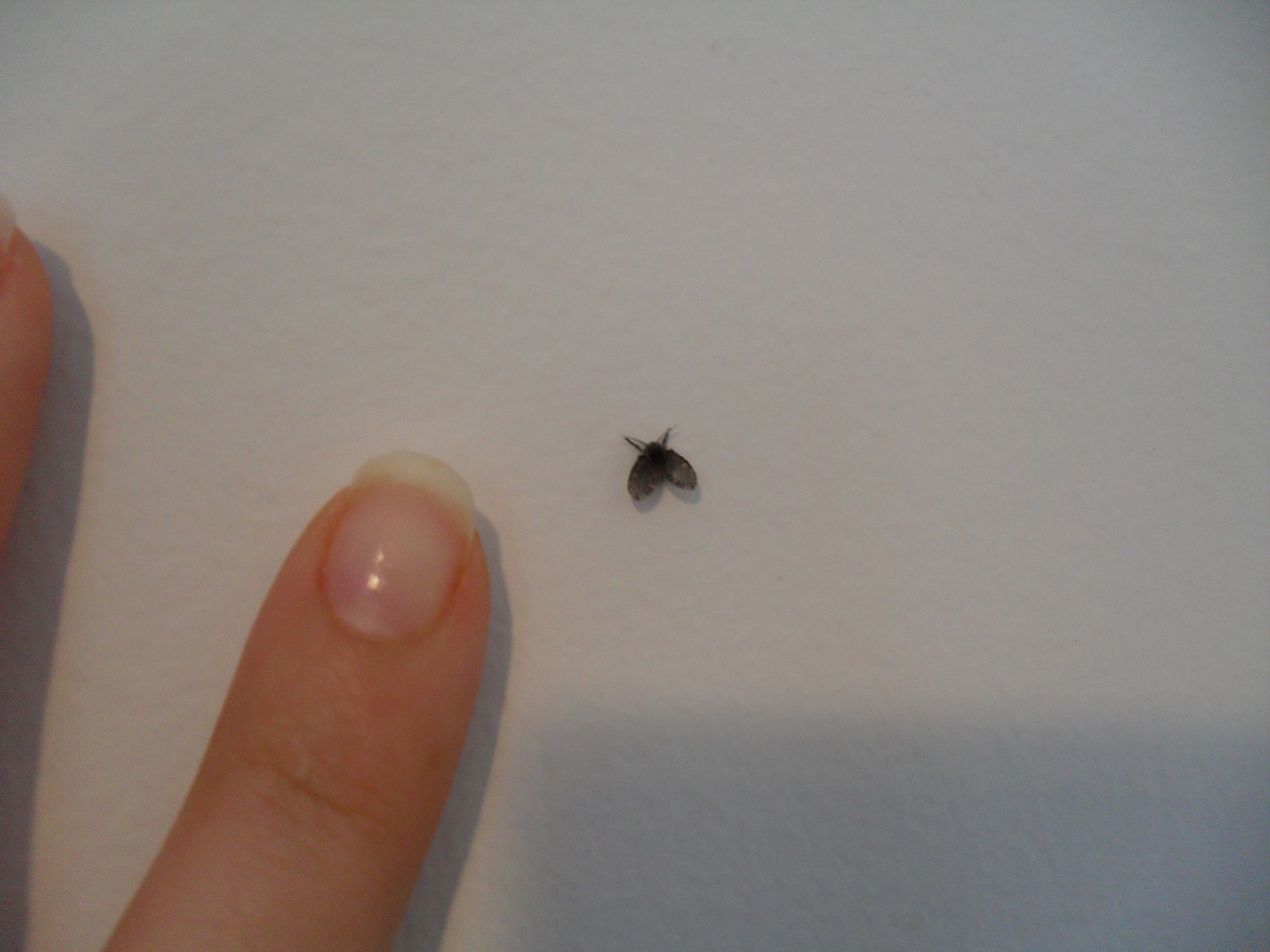Understanding Small Drain Flies

Small drain flies, also known as moth flies or sewer flies, are tiny, nuisance insects that are commonly found in bathrooms and other areas with moist environments. They are attracted to damp, organic matter, making bathrooms a prime breeding ground for these insects. Understanding their life cycle and ideal breeding conditions is crucial for effectively controlling them.
Life Cycle of Small Drain Flies
The life cycle of a small drain fly consists of four stages: egg, larva, pupa, and adult.
- Egg: Female drain flies lay their eggs in moist, organic matter, such as decaying food, hair, or soap scum. These eggs are small and white, and they hatch within a few days.
- Larva: The larvae are small, worm-like creatures that feed on organic matter. They have a segmented body and a dark head. Larvae can grow up to 1/4 inch in length.
- Pupa: After feeding for several weeks, the larvae pupate. They form a hard, brown casing around themselves, and they remain in this stage for several days.
- Adult: The adult drain flies emerge from the pupae. They are small, winged insects with fuzzy bodies. Adult drain flies are attracted to light and often fly around in swarms.
The entire life cycle of a drain fly can be completed in as little as two weeks, allowing for rapid population growth.
Ideal Conditions for Breeding, Small drain flies in bathroom
Small drain flies thrive in warm, moist environments with access to organic matter.
- Moisture: Drain flies need moisture to survive. They often breed in drains, sinks, and other areas where water collects. This is why they are frequently found in bathrooms, kitchens, and laundry rooms.
- Organic Matter: Drain flies feed on organic matter, such as decaying food, hair, soap scum, and other debris. These materials provide them with the nutrients they need to grow and reproduce.
- Temperature: Drain flies prefer warm temperatures. They are more active in the summer months when temperatures are higher.
These conditions are often present in bathrooms, making them a prime breeding ground for small drain flies.
Common Places Where Small Drain Flies Are Found in Bathrooms
Small drain flies are commonly found in bathrooms because they are attracted to the moisture and organic matter that are present in these areas.
- Drains: Bathroom drains are a common breeding ground for drain flies. The moisture and organic matter that accumulate in drains provide the ideal conditions for these insects to thrive.
- Sinks: Sinks are another common breeding ground for drain flies. The moisture and organic matter that accumulate in sinks can provide the ideal conditions for these insects to thrive.
- Showers and Bathtubs: Showers and bathtubs can also be breeding grounds for drain flies. The moisture and organic matter that accumulate in these areas can provide the ideal conditions for these insects to thrive.
- Floor Drains: Floor drains are another common breeding ground for drain flies. The moisture and organic matter that accumulate in floor drains can provide the ideal conditions for these insects to thrive.
By understanding the life cycle and ideal breeding conditions of small drain flies, homeowners can take steps to prevent and control these pests.
Identifying and Preventing Small Drain Flies: Small Drain Flies In Bathroom

Identifying and preventing small drain flies requires understanding their characteristics and life cycle. By recognizing the signs of an infestation and implementing preventive measures, you can minimize their presence in your bathroom.
Physical Characteristics of Small Drain Flies
Small drain flies, also known as moth flies or sewer flies, are tiny insects with a wingspan of about 3 millimeters. They have a characteristic fuzzy appearance, with hairy bodies and wings. Their color can range from gray to brown, and their wings are often held in a roof-like position over their bodies when at rest.
Signs of a Small Drain Fly Infestation
The presence of small drain flies in your bathroom is a clear sign of an infestation. Here are some common signs:
- Swarms of flies: You may notice small flies congregating near drains, sinks, or other moist areas.
- Flies flying around lights: Small drain flies are attracted to light, so you might see them flying around bathroom lights, especially at night.
- Black or brown specks: These are the droppings of small drain flies, and they can be found near drains and other areas where the flies congregate.
- Eggs or larvae: If you look closely, you may see small, white eggs or larvae near drains or in other moist areas.
Preventing Small Drain Fly Infestations
Preventing small drain fly infestations involves addressing the conditions that attract them. Here are some preventive measures:
- Clean drains regularly: Small drain flies breed in organic matter, such as hair, food particles, and soap scum. Regularly cleaning drains with a drain cleaner or baking soda and vinegar can help eliminate breeding grounds.
- Keep drains dry: After showering or bathing, wipe down the shower walls and floor to prevent water from accumulating. Also, ensure that any standing water in sinks or tubs is drained promptly.
- Seal cracks and crevices: Small drain flies can enter your bathroom through cracks and crevices in walls, pipes, or windows. Sealing these openings can prevent them from entering.
- Use drain covers: Installing drain covers over shower drains and bathroom sinks can prevent flies from entering the drain and breeding there.
- Install a fan: A bathroom exhaust fan helps remove moisture and humidity, making the environment less attractive to small drain flies.
Methods for Preventing Small Drain Flies
Here is a table comparing different methods for preventing small drain flies:
| Method | Description | Effectiveness | Cost | Effort Required |
|---|---|---|---|---|
| Regular Drain Cleaning | Cleaning drains with a drain cleaner or baking soda and vinegar | High | Low | Moderate |
| Keeping Drains Dry | Wiping down shower walls and floor, draining standing water promptly | High | Low | Low |
| Sealing Cracks and Crevices | Using caulk or sealant to close openings | High | Low to Moderate | Moderate |
| Drain Covers | Installing covers over drains | High | Moderate | Low |
| Bathroom Exhaust Fan | Installing and using an exhaust fan | High | Moderate | Low |
Eliminating Small Drain Flies

Eliminating an existing drain fly infestation requires a multi-pronged approach that addresses both the flies themselves and the conditions that attract them. This involves a combination of cleaning, treating, and preventative measures to effectively control and prevent future infestations.
Treating a Small Drain Fly Infestation
A comprehensive treatment plan for a small drain fly infestation involves a step-by-step process to effectively eliminate the flies and prevent their return.
- Identify the Source: Begin by pinpointing the exact location where the drain flies are emerging. This is often a drain in the bathroom, kitchen, or laundry room. Look for signs of standing water, organic matter, or a foul odor.
- Clean the Drain: Thoroughly clean the affected drain with a strong cleaning solution designed for drain cleaning. This will remove any accumulated organic matter, food particles, and slime that attract the flies.
- Apply a Drain Fly Killer: Use a drain fly killer specifically formulated to eliminate drain flies. These products typically contain pyrethroids, which are effective insecticides for controlling drain flies.
- Flush the Drain: After applying the drain fly killer, flush the drain with hot water to ensure the product reaches all areas and effectively eliminates the flies.
- Repeat Treatment: Repeat the cleaning and treatment process as needed, especially if you continue to see drain flies. Regular maintenance is key to preventing future infestations.
Preventing Future Infestations
Preventing future drain fly infestations involves maintaining a clean and dry environment that discourages their growth and reproduction.
- Clean Drains Regularly: Regularly clean all drains in your home, especially those in the bathroom, kitchen, and laundry room. This helps prevent the buildup of organic matter that attracts drain flies.
- Seal Drains: Use drain covers or screens to prevent drain flies from entering your home through drains. These covers are particularly helpful for drains that are not frequently used.
- Dry Wet Areas: Quickly dry any wet areas in your bathroom, kitchen, or laundry room. This includes spills, splashes, and condensation. Drain flies thrive in moist environments.
- Maintain Trash Cans: Keep trash cans clean and empty regularly. Drain flies can be attracted to decaying food and organic waste.
- Address Leaks: Repair any leaks or drips in your plumbing system. These can provide a source of moisture that attracts drain flies.
Sealing Potential Entry Points
Small drain flies can enter your home through various entry points, including cracks, crevices, and gaps around windows and doors.
- Caulk Cracks and Gaps: Use caulk to seal any cracks or gaps around windows, doors, pipes, and other areas where drain flies might enter.
- Install Weather Stripping: Install weather stripping around doors and windows to create a tighter seal and prevent drain flies from entering.
- Screen Windows and Doors: Ensure that all windows and doors have working screens to prevent insects from entering your home.
- Repair Damaged Screens: Repair any tears or holes in window and door screens to prevent drain flies from entering.
Small drain flies in bathroom – Small drain flies, also known as moth flies, are a common nuisance in bathrooms, often thriving in damp, stagnant water. While they are not known to carry diseases, they can be a source of irritation and an indicator of a potential plumbing issue.
Keeping your bathroom clean and dry is crucial, and using a plastic bathroom floor mat can help absorb excess water and prevent the formation of puddles, which are ideal breeding grounds for these pesky insects.
Small drain flies in the bathroom are a common nuisance, often thriving in damp environments and breeding in clogged drains. While addressing the source of the flies is crucial, ensuring a safe and dry bathroom is equally important. Investing in slip proof bathroom flooring not only enhances safety but also prevents moisture buildup, creating a less hospitable environment for drain flies.